Zhi Huang
Can Textual Gradient Work in Federated Learning?
Feb 27, 2025Abstract:Recent studies highlight the promise of LLM-based prompt optimization, especially with TextGrad, which automates differentiation'' via texts and backpropagates textual feedback. This approach facilitates training in various real-world applications that do not support numerical gradient propagation or loss calculation. In this paper, we systematically explore the potential and challenges of incorporating textual gradient into Federated Learning (FL). Our contributions are fourfold. Firstly, we introduce a novel FL paradigm, Federated Textual Gradient (FedTextGrad), that allows clients to upload locally optimized prompts derived from textual gradients, while the server aggregates the received prompts. Unlike traditional FL frameworks, which are designed for numerical aggregation, FedTextGrad is specifically tailored for handling textual data, expanding the applicability of FL to a broader range of problems that lack well-defined numerical loss functions. Secondly, building on this design, we conduct extensive experiments to explore the feasibility of FedTextGrad. Our findings highlight the importance of properly tuning key factors (e.g., local steps) in FL training. Thirdly, we highlight a major challenge in FedTextGrad aggregation: retaining essential information from distributed prompt updates. Last but not least, in response to this issue, we improve the vanilla variant of FedTextGrad by providing actionable guidance to the LLM when summarizing client prompts by leveraging the Uniform Information Density principle. Through this principled study, we enable the adoption of textual gradients in FL for optimizing LLMs, identify important issues, and pinpoint future directions, thereby opening up a new research area that warrants further investigation.
TextGrad: Automatic "Differentiation" via Text
Jun 11, 2024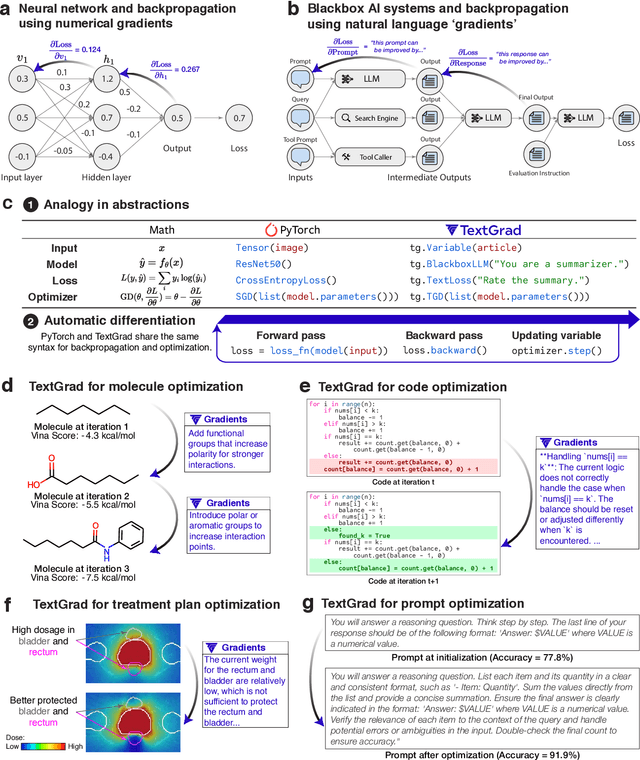

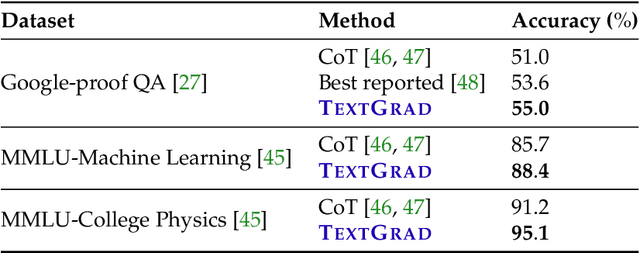
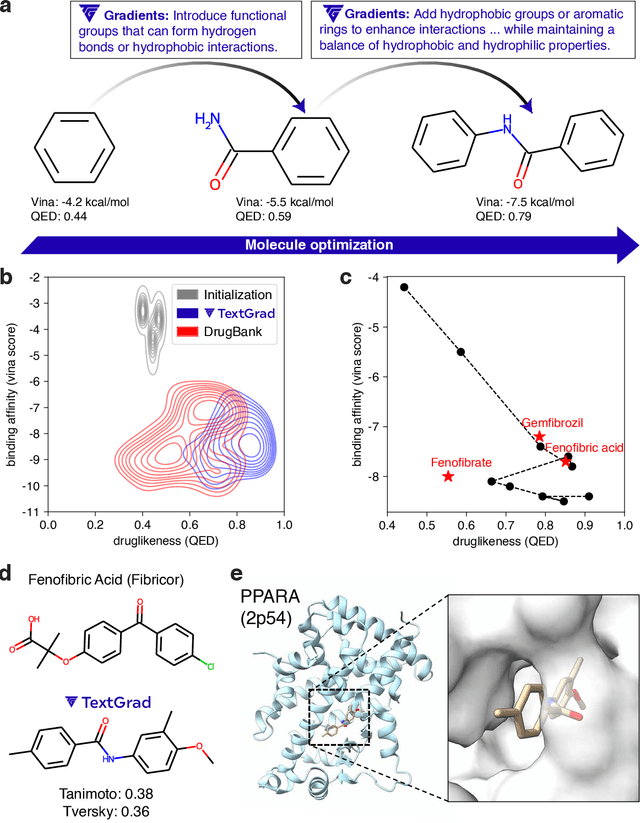
Abstract:AI is undergoing a paradigm shift, with breakthroughs achieved by systems orchestrating multiple large language models (LLMs) and other complex components. As a result, developing principled and automated optimization methods for compound AI systems is one of the most important new challenges. Neural networks faced a similar challenge in its early days until backpropagation and automatic differentiation transformed the field by making optimization turn-key. Inspired by this, we introduce TextGrad, a powerful framework performing automatic ``differentiation'' via text. TextGrad backpropagates textual feedback provided by LLMs to improve individual components of a compound AI system. In our framework, LLMs provide rich, general, natural language suggestions to optimize variables in computation graphs, ranging from code snippets to molecular structures. TextGrad follows PyTorch's syntax and abstraction and is flexible and easy-to-use. It works out-of-the-box for a variety of tasks, where the users only provide the objective function without tuning components or prompts of the framework. We showcase TextGrad's effectiveness and generality across a diverse range of applications, from question answering and molecule optimization to radiotherapy treatment planning. Without modifying the framework, TextGrad improves the zero-shot accuracy of GPT-4o in Google-Proof Question Answering from $51\%$ to $55\%$, yields $20\%$ relative performance gain in optimizing LeetCode-Hard coding problem solutions, improves prompts for reasoning, designs new druglike small molecules with desirable in silico binding, and designs radiation oncology treatment plans with high specificity. TextGrad lays a foundation to accelerate the development of the next-generation of AI systems.
Mapping the Increasing Use of LLMs in Scientific Papers
Apr 01, 2024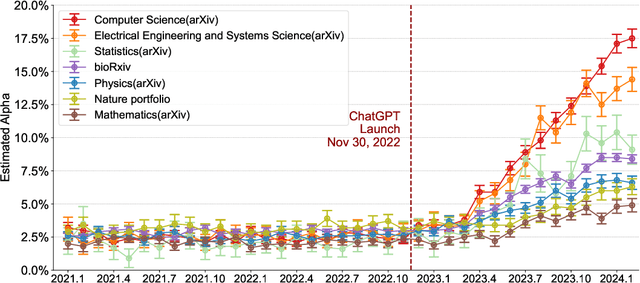
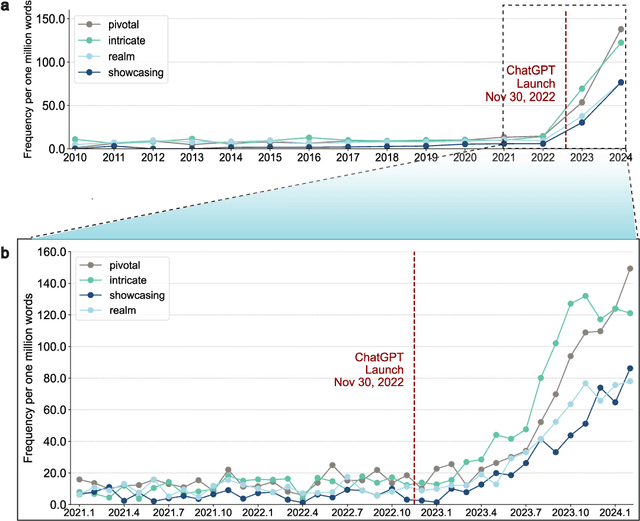
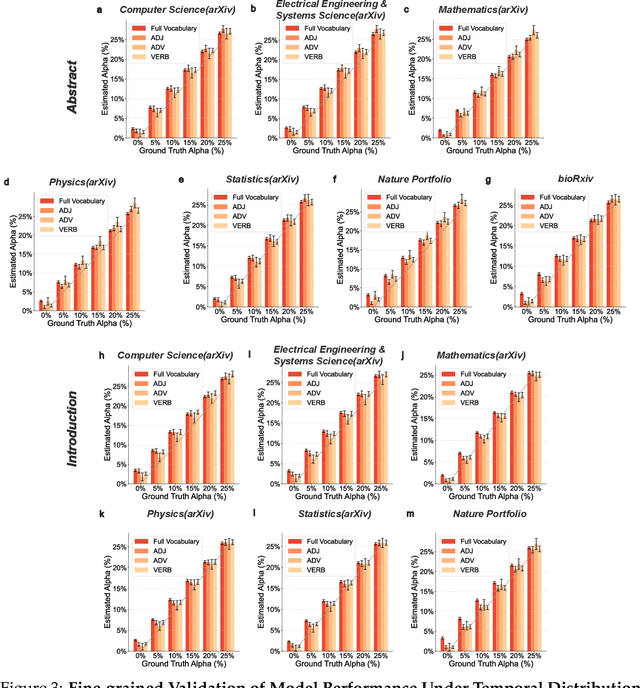
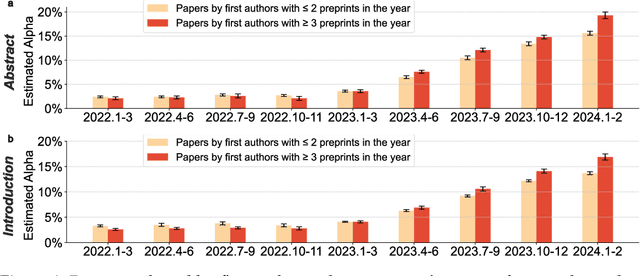
Abstract:Scientific publishing lays the foundation of science by disseminating research findings, fostering collaboration, encouraging reproducibility, and ensuring that scientific knowledge is accessible, verifiable, and built upon over time. Recently, there has been immense speculation about how many people are using large language models (LLMs) like ChatGPT in their academic writing, and to what extent this tool might have an effect on global scientific practices. However, we lack a precise measure of the proportion of academic writing substantially modified or produced by LLMs. To address this gap, we conduct the first systematic, large-scale analysis across 950,965 papers published between January 2020 and February 2024 on the arXiv, bioRxiv, and Nature portfolio journals, using a population-level statistical framework to measure the prevalence of LLM-modified content over time. Our statistical estimation operates on the corpus level and is more robust than inference on individual instances. Our findings reveal a steady increase in LLM usage, with the largest and fastest growth observed in Computer Science papers (up to 17.5%). In comparison, Mathematics papers and the Nature portfolio showed the least LLM modification (up to 6.3%). Moreover, at an aggregate level, our analysis reveals that higher levels of LLM-modification are associated with papers whose first authors post preprints more frequently, papers in more crowded research areas, and papers of shorter lengths. Our findings suggests that LLMs are being broadly used in scientific writings.
Monitoring AI-Modified Content at Scale: A Case Study on the Impact of ChatGPT on AI Conference Peer Reviews
Mar 11, 2024



Abstract:We present an approach for estimating the fraction of text in a large corpus which is likely to be substantially modified or produced by a large language model (LLM). Our maximum likelihood model leverages expert-written and AI-generated reference texts to accurately and efficiently examine real-world LLM-use at the corpus level. We apply this approach to a case study of scientific peer review in AI conferences that took place after the release of ChatGPT: ICLR 2024, NeurIPS 2023, CoRL 2023 and EMNLP 2023. Our results suggest that between 6.5% and 16.9% of text submitted as peer reviews to these conferences could have been substantially modified by LLMs, i.e. beyond spell-checking or minor writing updates. The circumstances in which generated text occurs offer insight into user behavior: the estimated fraction of LLM-generated text is higher in reviews which report lower confidence, were submitted close to the deadline, and from reviewers who are less likely to respond to author rebuttals. We also observe corpus-level trends in generated text which may be too subtle to detect at the individual level, and discuss the implications of such trends on peer review. We call for future interdisciplinary work to examine how LLM use is changing our information and knowledge practices.
A Delay Compensation Framework Based on Eye-Movement for Teleoperated Ground Vehicles
Sep 14, 2023Abstract:An eye-movement-based predicted trajectory guidance control (ePTGC) is proposed to mitigate the maneuverability degradation of a teleoperated ground vehicle caused by communication delays. Human sensitivity to delays is the main reason for the performance degradation of a ground vehicle teleoperation system. The proposed framework extracts human intention from eye-movement. Then, it combines it with contextual constraints to generate an intention-compliant guidance trajectory, which is then employed to control the vehicle directly. The advantage of this approach is that the teleoperator is removed from the direct control loop by using the generated trajectories to guide vehicle, thus reducing the adverse sensitivity to delay. The delay can be compensated as long as the prediction horizon exceeds the delay. A human-in-loop simulation platform is designed to evaluate the teleoperation performance of the proposed method at different delay levels. The results are analyzed by repeated measures ANOVA, which shows that the proposed method significantly improves maneuverability and cognitive burden at large delay levels (>200 ms). The overall performance is also much better than the PTGC which does not employ the eye-movement feature.
Low-Rank Reorganization via Proportional Hazards Non-negative Matrix Factorization Unveils Survival Associated Gene Clusters
Sep 17, 2020
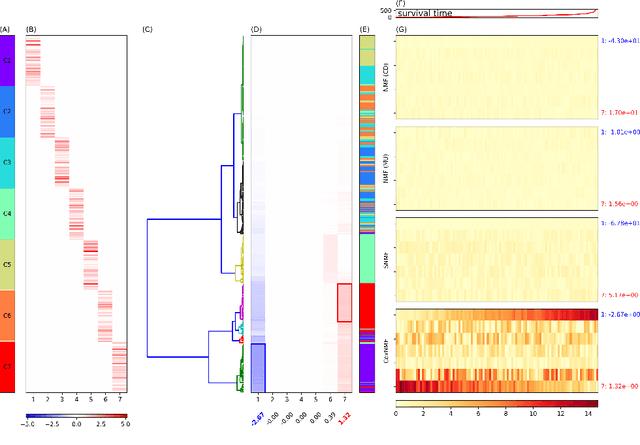
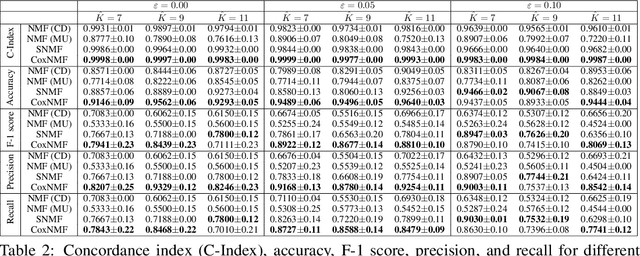
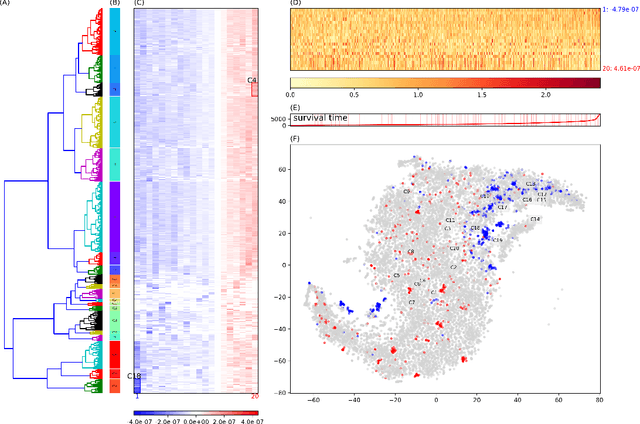
Abstract:One of the central goals in precision health is the understanding and interpretation of high-dimensional biological data to identify genes and markers associated with disease initiation, development, and outcomes. Though significant effort has been committed to harness gene expression data for multiple analyses while accounting for time-to-event modeling by including survival times, many traditional analyses have focused separately on non-negative matrix factorization (NMF) of the gene expression data matrix and survival regression with Cox proportional hazards model. In this work, Cox proportional hazards regression is integrated with NMF by imposing survival constraints. This is accomplished by jointly optimizing the Frobenius norm and partial log likelihood for events such as death or relapse. Simulation results on synthetic data demonstrated the superiority of the proposed method, when compared to other algorithms, in finding survival associated gene clusters. In addition, using human cancer gene expression data, the proposed technique can unravel critical clusters of cancer genes. The discovered gene clusters reflect rich biological implications and can help identify survival-related biomarkers. Towards the goal of precision health and cancer treatments, the proposed algorithm can help understand and interpret high-dimensional heterogeneous genomics data with accurate identification of survival-associated gene clusters.
 Add to Chrome
Add to Chrome Add to Firefox
Add to Firefox Add to Edge
Add to Edge